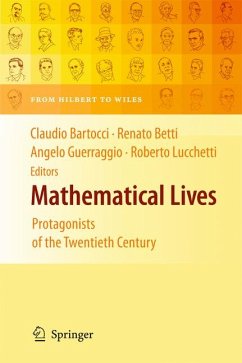Dieser Download kann aus rechtlichen Gründen nur mit Rechnungsadresse in A, B, BG, CY, CZ, D, DK, EW, E, FIN, F, GR, HR, H, IRL, I, LT, L, LR, M, NL, PL, P, R, S, SLO, SK ausgeliefert werden.
"To attract new blood, mathematics must have a human face. ... Thus, one welcomes a book on Bell's model for the 20th century. ... Summing Up: Recommended. All levels/libraries." (D. V. Feldman, Choice, Vol. 48 (9), May, 2011)
"This is a highly recommendable reading for mathematicians ... . Being a collection of independent chapters, the reader can proceed by browsing through the sections guided by the contents table. ... the reader can pick the book as a novel and read it from first page to last. This is relevant, because the organization and ordering of the chapters contribute to the overall effect by combining in different doses mathematics and life ... . This is a book to read and enjoy ... ." (Jesus M. Ruiz, The European Mathematical Society, August, 2011)
"This translation of a 2007 Italian collection has very interesting writeups about Michael Atiyah, N. Bourbaki, E. De Giorgi, A. N. Kolmogorov, John Nash, Laurent Schwartz, Gian-Carlo Rota, and Stephen Smale, among others. ... its descriptions of Italian mathematics and its context will be particularly valuable to non-Italians. ... there are lots of biographies and commentaries available." (Robert E. O'Malley, Jr., SIAM Review, Vol. 53 (2), 2011)









